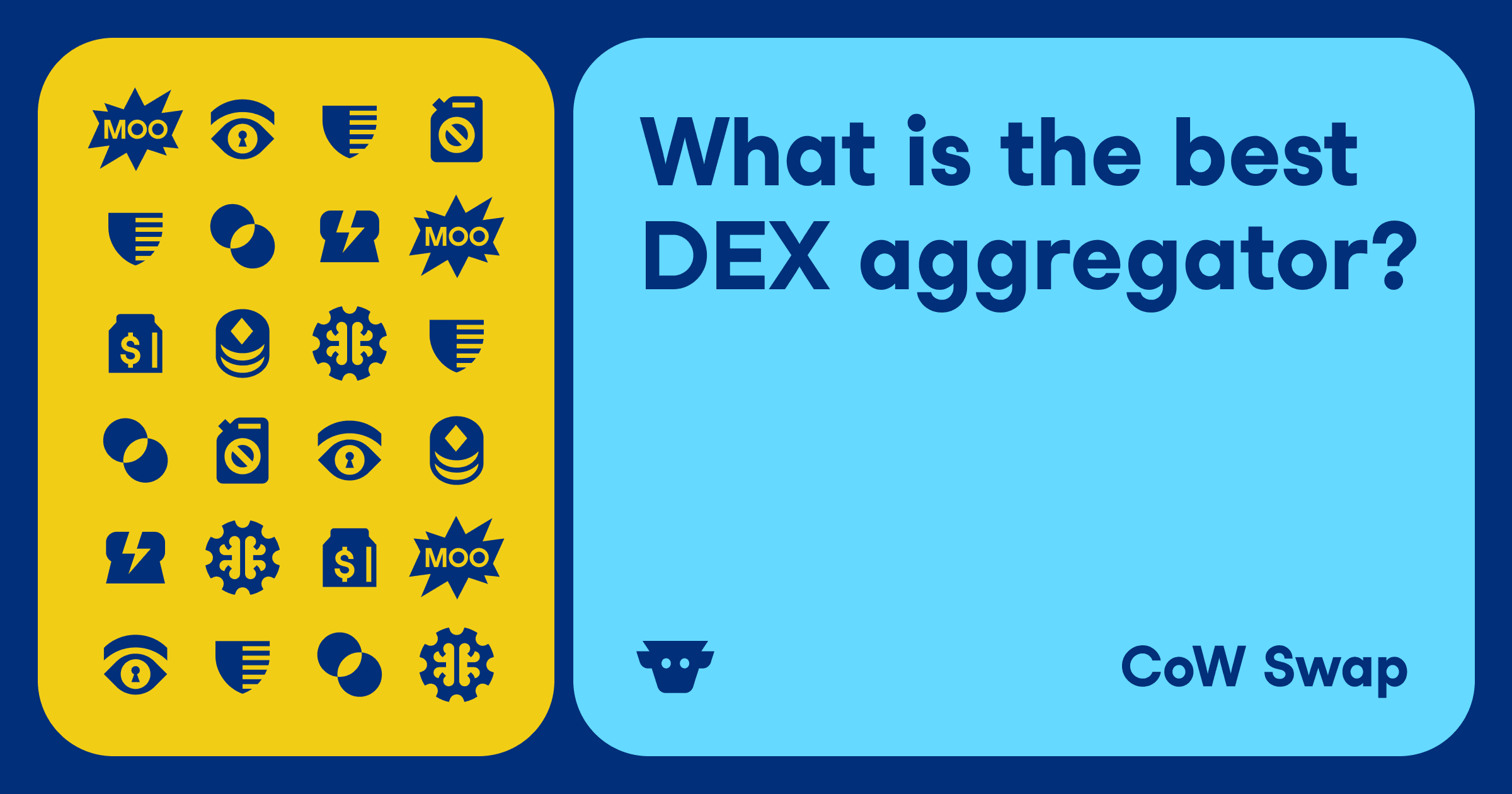Understanding MEV Protection
MEV, or maximal extractable value, is a form of price exploitation that acts as a “hidden tax” on Ethereum transactions.
To date, MEV has caused over a billion dollars in losses for everyday traders, especially beginners who often don’t know how to protect themselves.

In this article we’ll take a look at what MEV is and explore some of the popular protection solutions.
What is MEV protection?
MEV protection refers to a broad set of strategies that keep users safe from price manipulation when trading, providing liquidity, minting NFTs, and more.
What exactly are you protecting against?
To understand MEV, we must first understand how Ethereum transactions are processed.

When a user places an order, it initially gets submitted to a holding area for pending Ethereum transactions known as the “mempool.” Transactions in the mempool are public, meaning that MEV bots (known as “searchers”) can monitor them for exploitation opportunities.. MEV relies on reordering transactions from the order in which they were submitted to a new, more profitable order.
Example: sandwich attacks
To better understand this process, let’s trace the flow of a sandwich attack — the worst type of MEV.

Essentially, traders place orders on AMMs by designating a slippage tolerance. Searchers can exploit these orders by placing similar trades before and after the user trade, manipulating the price of the assets on the AMM and forcing the victim trade to execute at a higher price.
Searchers pocket this difference in price for themselves. Their only cost is the amount of money they spend bribing the Ethereum block builders to order the transactions in a specific way.
To learn more about the different types of MEV, check out our articles on sandwich attacks, frontrunning, and backrunning.
How to protect yourself from MEV
Now let’s take a look at methods and tools you can implement to guard against MEV exploitation.
Slippage tolerance and MEV protection
The most basic defense against MEV is setting a low slippage tolerance.
Since MEV relies on slippage for price manipulation, transactions with a lower slippage tolerance give searchers less room to exploit trades.
For users who aren’t utilizing any other MEV protection tools, setting a lower slippage tolerance can be a good first line of defense, however it’s by no means a complete solution. Setting the slippage tolerance too low often results in failed transactions. Even with optimal slippage, MEV bots may still be able to extract value from your trades.
RPC endpoint tools for MEV protection
A better protection method is to install an MEV protection RPC endpoint.
A Remote Procedure Call (RPC) endpoint is an intermediate layer that routes transactions from a user’s wallet to the blockchain itself. Transactions pass through RPC endpoints before getting to the mempool, so RPCs can provide additional functionality across any blockchain application or protocol.
Normally, RPCs are a boring piece of blockchain infrastructure. Recently, however, specialized RPCs have begun incorporating extra security guarantees for transactions before they reach the blockchain.
MEV Blocker
One of the most popular specialized RPC endpoints is MEV Blocker.
As the name suggests, MEV Blocker provides protection against MEV across all of Ethereum. The RPC works by managing a permissionless network of searchers and hiding transactions from the public mempool. These searchers cannot frontrun or sandwich user transactions. Instead, they capture value through backrunning.
Anytime a searcher backruns a user’s transaction, the searcher keeps up to 10% of the value and sends the other 90% back to the user as a rebate. So even when a transaction leaves money on the table, MEV Blocker puts it back into the pockets of users.
MEV Blocker provides protection for any type of Ethereum transaction (not just swaps), and it works with all Ethereum wallets. Install the MEV Blocker RPC endpoint by following the instructions here.
Decentralized applications and MEV protection
While RPC endpoints provide significant MEV protection, the most complete protection comes at the application layer.
As MEV has become more prevalent, decentralized applications (especially decentralized exchanges — DEX’s) have begun offering creative protection solutions to users. For example, many DEXs offer an “auto-slippage” feature which determines the optimal slippage for user trades, reducing the chances of price exploitation.
Native MEV protection on CoW Protocol
CoW Protocol is a meta DEX aggregator that finds the best prices for trades and provides comprehensive MEV protection. The protocol uses a unique trading mechanism that relies on batch auctions and intents to achieve the best outcomes for users.

Starting at the application level, CoW Protocol provides end-to-end MEV protection through its unique protocol design:
Delegated Trade Execution: On CoW Protocol, bonded third parties known as “solvers” execute transactions on behalf of users. Solvers source liquidity across multiple DEX’s and even offchain liquidity sources to find the best prices for any given trade. Solvers also execute transactions on behalf of users, meaning they are never exposed to the blockchain directly.
Coincidences of Wants (CoWs): Thanks to CoW Protocol’s batching mechanism, trades may be matched using peer-to-peer liquidity in a Coincidence of Wants (CoW). This method of trading bypasses AMMs, reducing fees and preventing MEV.
Uniform Clearing Prices: Another benefit of batching is that duplicate trade pairs within a given batch clear for the same price. For example, if multiple users are trading ETH and USDC in the same batch, the assets will execute for the same price across the various trades. This makes transaction reordering useless, removing the opportunity for price exploitation.
Thanks to a powerful combination of delegated trade execution, batch auctions, and protected transaction flow through MEV Blocker, CoW Protocol users benefit from thorough MEV protection on all trades.
CoW DAO protects you from MEV
MEV is a billion dollar problem for the Ethereum ecosystem. CoW DAO builds products to protect users from negative outcomes for transactions of all types and sizes.
DeFi traders can rely on CoW Swap as the most trusted decentralized exchange when it comes to MEV protection. For all other use-cases, including liquidity providing, NFT trading, and more, MEV Blocker provides extensive MEV protection anywhere on Ethereum.
If you want to learn more about MEV, check out “MEV Transparency: Ensuring Fairness In DeFi Markets” and “How CoW Swap solves the MEV problem.”
Safe trading!
FAQs
What is MEV and why is it harmful?
MEV (maximal extractable value) is a form of price exploitation that acts as a "hidden tax" on Ethereum transactions. It has caused over a billion dollars in losses for everyday traders, especially beginners who don't know how to protect themselves. MEV relies on reordering transactions from their original submission order to a more profitable arrangement, allowing exploiters to extract value from unsuspecting users.
How do sandwich attacks work?
Sandwich attacks occur when MEV bots (searchers) monitor pending transactions in the mempool and exploit a trader's slippage tolerance. The searchers place similar trades before and after the user's trade, manipulating the asset price on the AMM and forcing the victim's trade to execute at a higher price. The searchers pocket the price difference, with their only cost being the bribes paid to Ethereum block builders to order transactions in their preferred way.
What are some basic methods to protect against MEV?
Setting a low slippage tolerance is the most basic defense against MEV since it gives searchers less room to exploit trades. Users can also install specialized MEV protection RPC endpoints like MEV Blocker, which hides transactions from the public mempool and works with a permissionless network of searchers who cannot frontrun or sandwich user transactions. For comprehensive protection, using decentralized applications that offer native MEV protection features like auto-slippage is recommended.
How does MEV Blocker protect users?
MEV Blocker is a specialized RPC endpoint that provides protection against MEV across Ethereum by managing a network of searchers and hiding transactions from the public mempool. These searchers cannot frontrun or sandwich user transactions but can capture value through backrunning, with 90% of the value returned to users as rebates. MEV Blocker works with all Ethereum wallets, protects any type of Ethereum transaction (not just swaps), and can be installed by following instructions on their website.
How does CoW Protocol provide MEV protection?
CoW Protocol is a meta DEX aggregator that provides comprehensive MEV protection through its unique design. It offers delegated trade execution where bonded third parties called "solvers" execute transactions on behalf of users, finding the best prices across multiple DEXs. The protocol facilitates peer-to-peer liquidity matching through Coincidences of Wants (CoWs), bypassing AMMs and preventing MEV. Additionally, it implements uniform clearing prices within batches, making transaction reordering useless and eliminating price exploitation opportunities.


